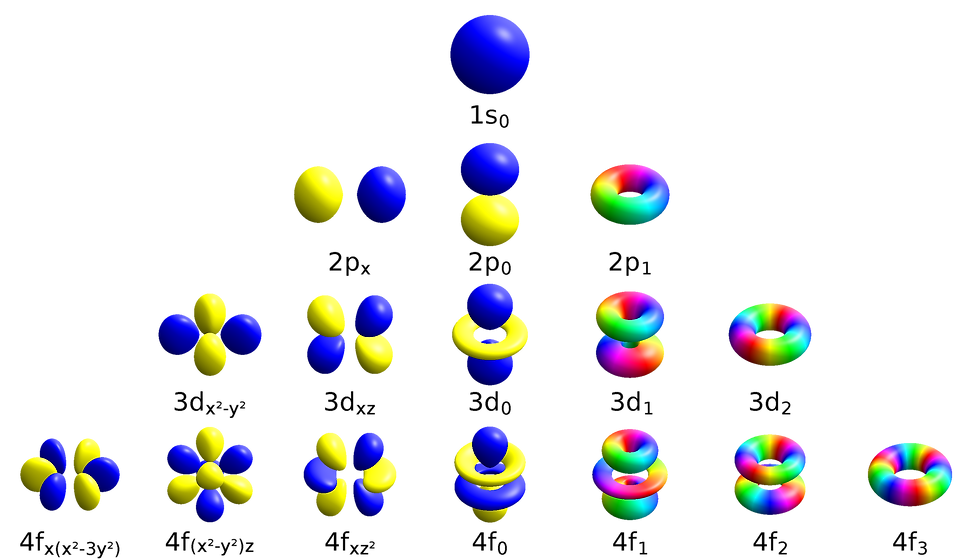
Last time I was explaining how chemistry is all about electrons, and that electrons govern the bonds which form between atoms, and that we can simulate chemistry, and chemical structure, by representing these bonds in a Newtonian manner - as balls on springs.
However, this is a rather simple view of chemical bonding, because electrons (and hydrogen atoms) are quantum in nature, and so behave as particles and waves.
What do we mean by an electron acting as a particle and a wave? How does this influence chemistry? And why does this make it hard to simulate chemistry from first principles? Electrons are subatomic particles, and have a negative charge, while the nucleus of an atom is made up of positively charged protons, and neutral charge neutrons. For a charge-neutral atom, the number of electrons bound to it matches the number of protons in the nucleus.
Electrons are tiny! They have 1/1836th the mass of a proton. In fact, an atom's volume defined by the space that electrons orbit the nucleus within is mainly empty space. Electrons are so small they are quantum particles, acting as a particle and as a wave. This is because these particles are subject to Heisenberg's Uncertainty principle. If we try to measure the position of an electron, we alter its velocity. Likewise, if we measure the velocity of an electron, we change the position of the electron.

This means we can never say for certain where an electron is at any one moment, or the velocity it has. But we can describe the probability of an electron being in a unit of space, or the probability of the property of an electron.
Thinking in terms of probability underpins the mathematics of determining the interactions between atoms and electrons and how those electrons form bonds.
To simplify the mathematics a little we typically set some restrictions. We don't need to worry about the motion of the nuclei when solving our formulae for the electrons because the motions of electrons are magnitudes of times faster than nuclei. We can also limit which electrons we are solving the mathematics for to just the valence electrons - those are the electrons in the outer orbitals of the atom, and which are involved in the bonding.


Given the criteria above we can begin to solve the quantum mechanical formulae to determine the relative energy for an arrangement of atoms. We are trying to find the stable distribution of electrons given the position of the nuclei (which form a positive electrostatic field the electrons move within) and to make things even more complicated, the interactions between the electrons themselves.
Before we delve into the world of Schrodingers equations, and how we solve them for multi-electron systems let's just end on the final message; Electrons are particles and waves, and we know the probabilities of where they might be in space. Electrons orbit atoms and carve out regions of space that they are most likely to be found within.


Comments